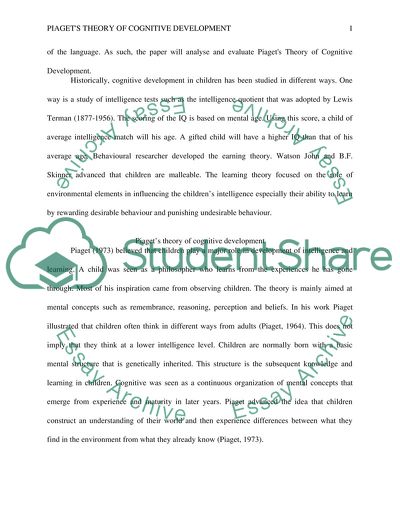Cite this document
(Piaget's Theory of Cognitive Development Report Example | Topics and Well Written Essays - 1750 words, n.d.)
Piaget's Theory of Cognitive Development Report Example | Topics and Well Written Essays - 1750 words. https://studentshare.org/education/1845472-piagets-theory-of-cognitive-development
Piaget's Theory of Cognitive Development Report Example | Topics and Well Written Essays - 1750 words. https://studentshare.org/education/1845472-piagets-theory-of-cognitive-development
(Piaget'S Theory of Cognitive Development Report Example | Topics and Well Written Essays - 1750 Words)
Piaget'S Theory of Cognitive Development Report Example | Topics and Well Written Essays - 1750 Words. https://studentshare.org/education/1845472-piagets-theory-of-cognitive-development.
Piaget'S Theory of Cognitive Development Report Example | Topics and Well Written Essays - 1750 Words. https://studentshare.org/education/1845472-piagets-theory-of-cognitive-development.
“Piaget'S Theory of Cognitive Development Report Example | Topics and Well Written Essays - 1750 Words”. https://studentshare.org/education/1845472-piagets-theory-of-cognitive-development.


